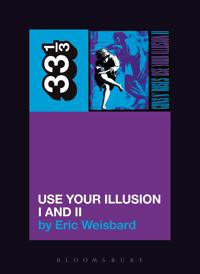
endast ny
Guns N' Roses' Use Your Illusion I and II
It was the season of the blockbuster. Between August 12 and November 26 1991, a whole slew of acts released albums that were supposed to sell millions of copies in the run-up to Christmas. Metallica, Michael Jackson, Pearl Jam, Nirvana, Garth Brooks, MC Hammer, and U2 - all were competing for the attention of the record-buying public at the same time. But perhaps the most attention-seeking act of all was Guns N' Roses. Their albums "Use Your Illusion I & II", released on the same day, were both 75-minute sprawlers with practically the same cover design - an act of colossal arrogance. On one level, it worked. The albums claimed the top two chart positions and ultimately sold 7 million copies each in the US alone. On another level, it was a disaster. This was an album that Axl Rose has been unable to follow-up in fifteen years. It signalled the end of "Guns N' Roses", of heavy metal on the Sunset Strip and the entire 1980s model of blockbuster pop/rock promotion. "Use Your Illusion" marked the end of rock as mass culture. In this book, Eric Weisbard shows how the album has matured into a work whose baroque excesses now have something to teach us about pop and the platforms it raises and lowers, about a man who suddenly found himself praised to the firmament for every character trait that had hitherto marked him as an irredeemable loser.
Utgiven: 2007
ISBN: 9780826419248
Förlag: Continuum International Publishing Group Ltd.
Format: Häftad
Språk: Engelska
Sidor: 136 st
It was the season of the blockbuster. Between August 12 and November 26 1991, a whole slew of acts released albums that were supposed to sell millions of copies in the run-up to Christmas. Metallica, Michael Jackson, Pearl Jam, Nirvana, Garth Brooks, MC Hammer, and U2 - all were competing for the attention of the record-buying public at the same time. But perhaps the most attention-seeking act of all was Guns N' Roses. Their albums "Use Your Illusion I & II", released on the same day, were both 75-minute sprawlers with practically the same cover design - an act of colossal arrogance. On one level, it worked. The albums claimed the top two chart positions and ultimately sold 7 million copies each in the US alone. On another level, it was a disaster. This was an album that Axl Rose has been unable to follow-up in fifteen years. It signalled the end of "Guns N' Roses", of heavy metal on the Sunset Strip and the entire 1980s model of blockbuster pop/rock promotion. "Use Your Illusion" marked the end of rock as mass culture. In this book, Eric Weisbard shows how the album has matured into a work whose baroque excesses now have something to teach us about pop and the platforms it raises and lowers, about a man who suddenly found himself praised to the firmament for every character trait that had hitherto marked him as an irredeemable loser.
Ny bok
139 kr146 kr
5% studentrabatt med Studentapan
Begagnad bok (0 st)
Varje vecka tillkommer tusentals nya säljare. Bevaka boken så får du meddelande när den finns tillgänglig igen.



